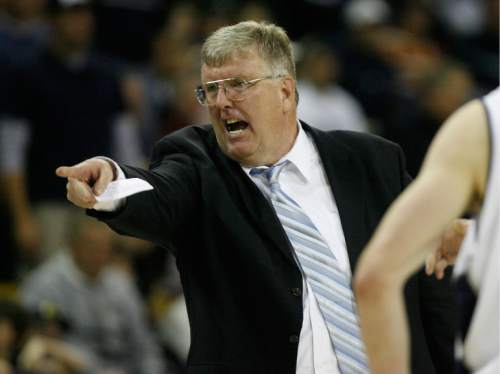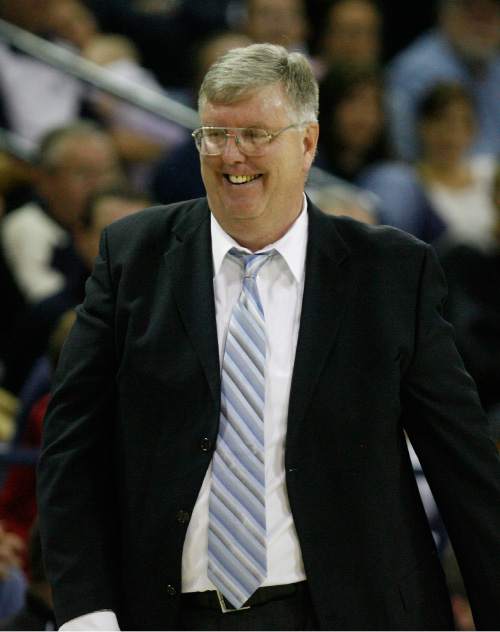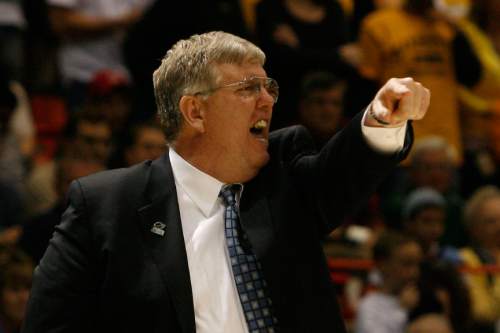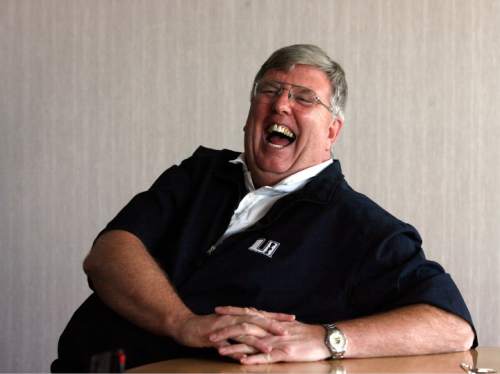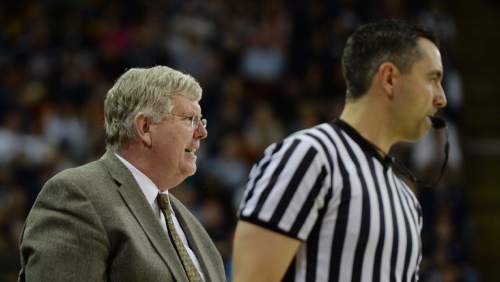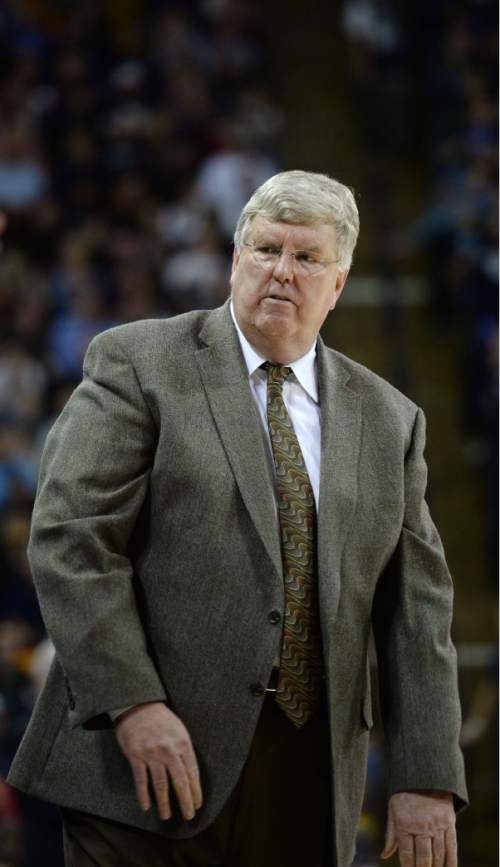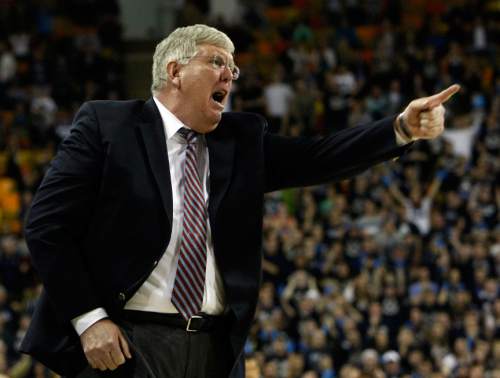This is an archived article that was published on sltrib.com in 2015, and information in the article may be outdated. It is provided only for personal research purposes and may not be reprinted.
Five football coaches, four athletic directors, three presidents and one Stew Morrill.
That covers Utah State's staffing of high-profile jobs in the 17 years since Morrill became the Aggies' basketball coach and proceeded to win "enough to keep working," as Morrill summarized his tenure Friday.
When he retires after this season at age 62, stability, consistency, longevity and a victory total that's approaching 400 games all will become part of Morrill's legacy in Logan. Climate change, too. USU president Stan Albrecht credited Morrill with making Cache Valley's winters "much more bearable," and that's saying something.
USU's national importance is reflected by only one NCAA Tournament victory under Morrill, but his local impact never should be underestimated. Long before the football program's recent resurgence, Morrill's basketball team basically maintained the brand of Aggie athletics, all by itself.
The Morrill Act of 1862 created land-grant colleges such as Utah State, mainly for agricultural education. So it was that Stewart Morrill's farewell news conference was staged in the new Ag Sciences Building, where the coach wore his traditional sweatsuit and alternated between joking around and having his voice catch with emotion.
And then he was off to practice, having observed that he may become nicer to the players in his remaining two months on the job, "but I probably won't."
Weber State coach Randy Rahe, formerly Morrill's longtime assistant at two schools, once said, "Every once in a while as coaches, you find a perfect fit."
Morrill and USU were very good together, for a long time. What goes unfulfilled is my curiosity about whether Morrill could have made the Aggies contenders in the Mountain West. His demanding nature and rigid system worked wonderfully with the level of athletes he coached in the Big West and the Western Athletic Conference. In those days, as Rahe has said, Morrill could pound "a square peg into a round hole until they become round."
His system enabled overachieving athletes to succeed in mid-major Division I basketball. Would it work with the kind of recruits required to play in the Mountain West? Maybe it's best that we won't find out.
What's clear is that Morrill has thrived in Logan, winning 72 percent of his games with exactly one future NBA player on his all-time roster — Desmond Penigar, who appeared in the league for a total of 89 minutes. The Provo native made Aggie basketball relevant in his home state, while chafing only about having to live with the expectations he created with eight NCAA appearances and one victory, over Ohio State in 2001.
His only defensive remark of Friday's news conference came when he recited his usual response to critics of that record: "Well, you go play those people. It's not easy."
In the Spectrum, Morrill has made it look easy, winning nearly 90 percent of the time. As football struggled for most of three decades, a USU administrator once told Morrill that the school would ride the basketball program like "a hot horse."
Morrill's quick answer: "The jockey's friggin' tired."
He finally wore out this season, which continues with Saturday's home game vs. New Mexico. Morrill's last scheduled appearance in the Spectrum is March 7 — a meeting with Colorado State that almost seems scripted. Morrill came to Logan from CSU, which is now coached by Larry Eustachy, his predecessor at USU.
Eustachy made Morrill's current job attractive, and then Morrill made himself a Cache Valley icon. Where would he have taken the program from here? We'll never know. What matters is that he got it to this point.
Twitter: @tribkurt


